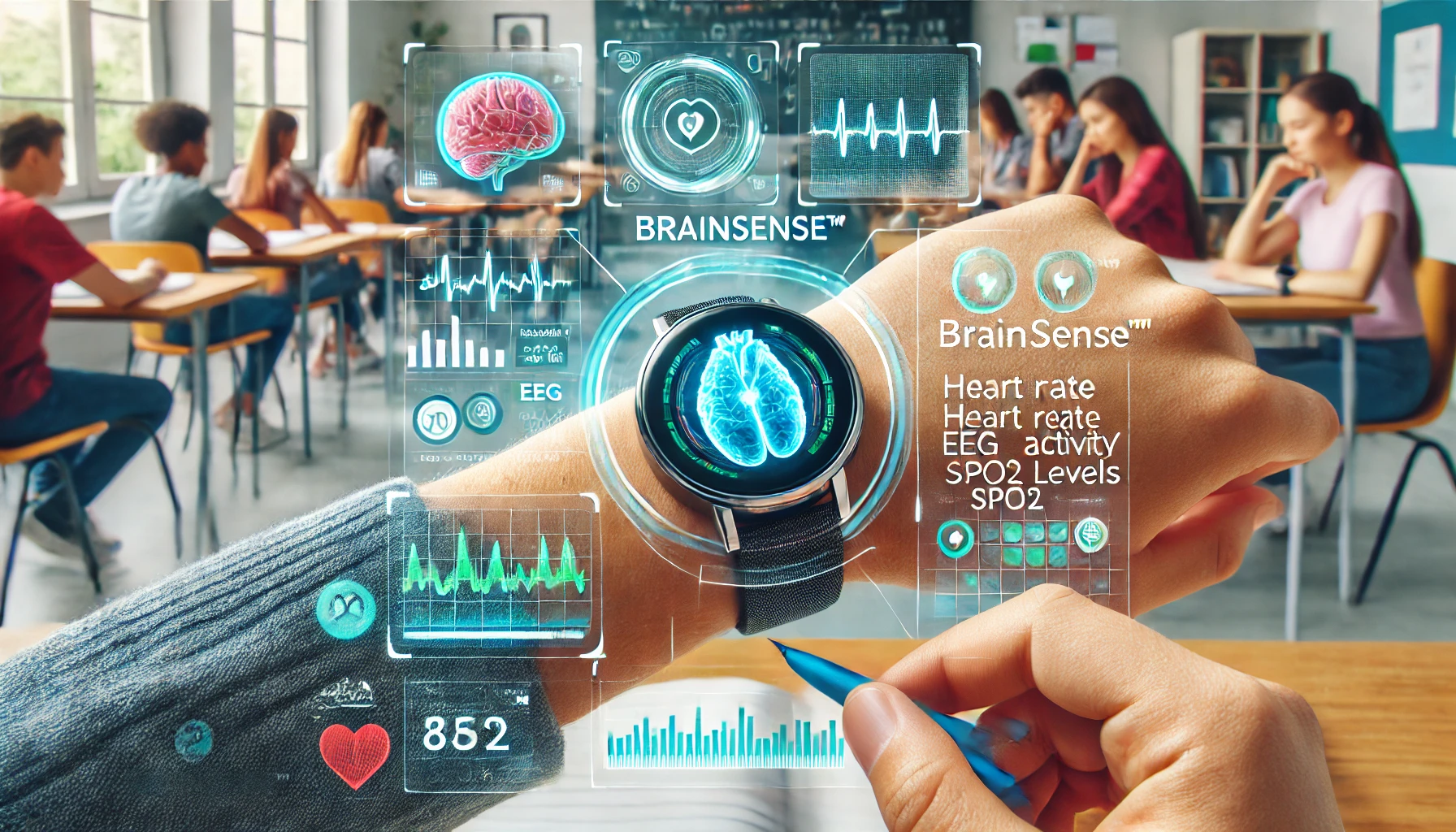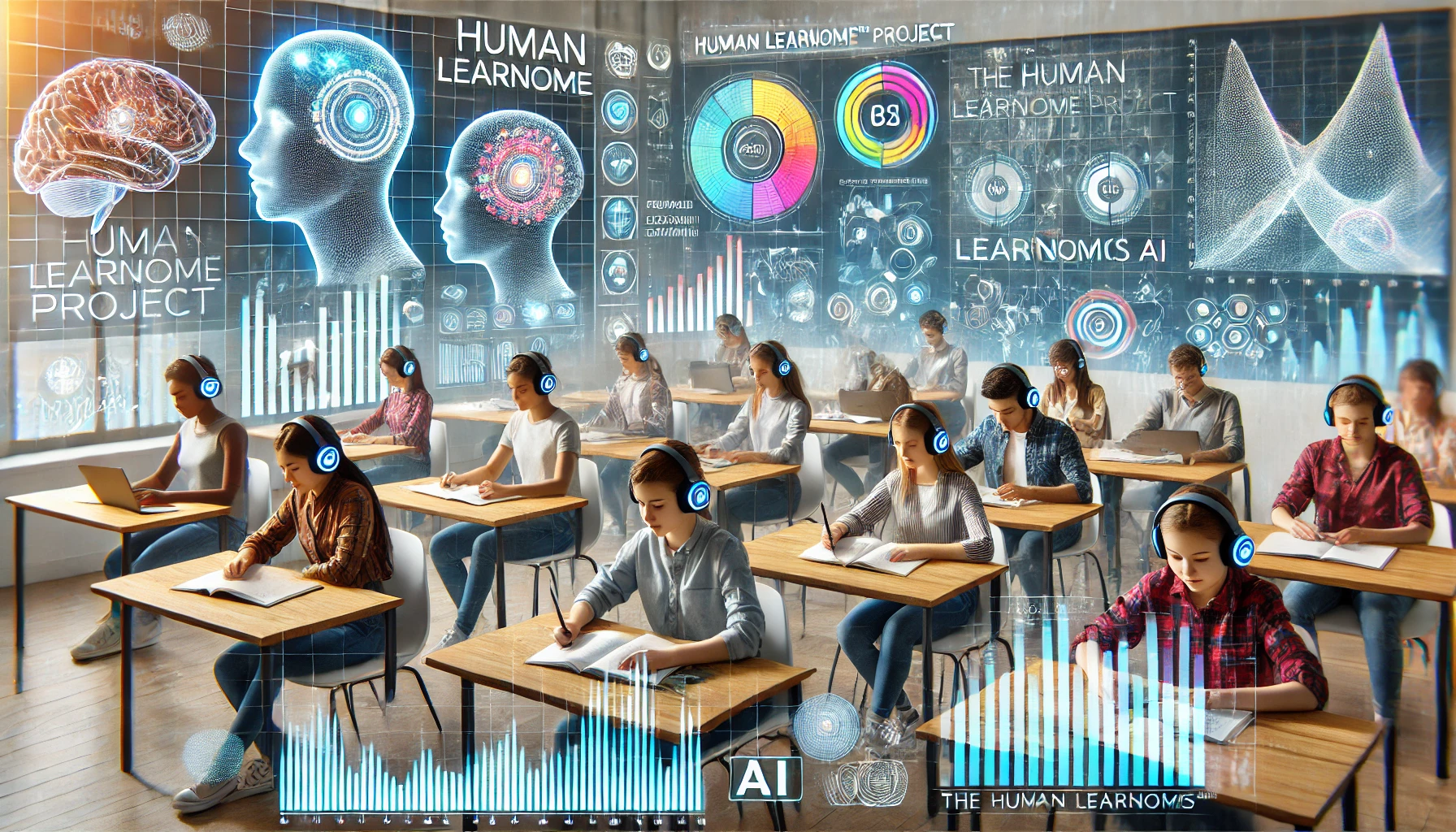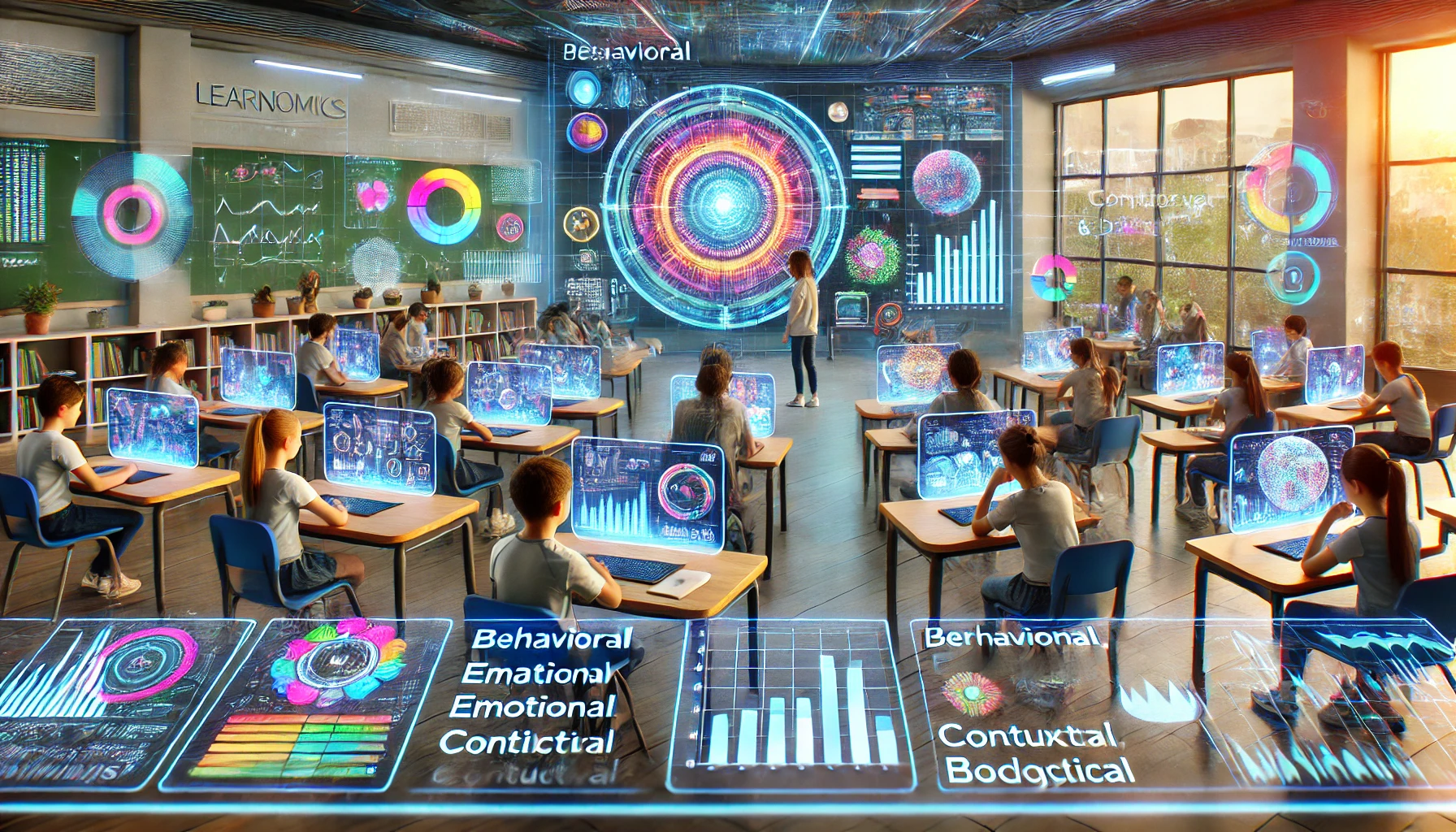Abstract
The BrainSense™ wearable device represents a significant advancement in educational technology, designed to collect and analyze multimodal data to enhance personalized learning experiences. This review paper explores the development, design, and functionality of the BrainSense™ device, highlighting its role within the Learnomics AI ecosystem. The paper evaluates the device’s sensors, data processing capabilities, connectivity, user interface, ergonomic design, and overall impact on educational outcomes.
Introduction
The rapid development of wearable technology has opened new avenues for enhancing educational experiences through personalized and adaptive learning. The BrainSense™ wearable device is at the forefront of this innovation, integrating advanced sensors and data processing capabilities to provide real-time insights into a learner’s cognitive, emotional, and physiological states. This paper reviews the research and development of the BrainSense™ device, examining its features, benefits, and potential applications within the Learnomics AI ecosystem.
Device Overview
Key Features
- Multimodal Data Collection:
- Heart Rate and Variability: Monitoring cardiovascular health and stress levels.
- EEG Activity: Measuring brain wave patterns to assess cognitive load and mental states.
- SpO2 Levels: Tracking blood oxygen saturation.
- Skin Conductance: Detecting emotional arousal and stress responses.
- Motion and Activity: Recording physical activity levels and movement patterns.
- Data Processing Unit:
- Microcontroller (MCU): Efficient data processing and management.
- Real-Time Analysis: Immediate feedback and adaptation based on collected data.
- Connectivity:
- Bluetooth Low Energy (BLE): Real-time data transmission with minimal power consumption.
- Wi-Fi and NFC: High-speed data uploads and secure data transfers.
- User Interface:
- Touchscreen Display: High-resolution, responsive interface for interacting with the device.
- Notifications: Visual, auditory, and haptic feedback.
- Ergonomic Design:
- Comfortable Fit: Lightweight and skin-friendly materials.
- Durability: Water resistance and robust construction for everyday use.
Development and Design
Sensor Integration
The integration of multiple sensors in a compact wearable form factor posed significant challenges, particularly in ensuring accuracy and reliability across various environmental conditions. The BrainSense™ device successfully incorporates sensors to monitor heart rate, EEG activity, SpO2 levels, and skin conductance, providing comprehensive data for real-time analysis.
Data Processing and Transmission
The device’s microcontroller unit (MCU) efficiently handles data processing, ensuring real-time feedback and adaptation. Connectivity options like Bluetooth Low Energy (BLE) and Wi-Fi enable seamless data transmission to the Learnomics AI cloud, facilitating continuous monitoring and analysis.
User Interface and Experience
The BrainSense™ device features a high-resolution touchscreen display, providing an intuitive interface for users. Real-time notifications and feedback are delivered through visual, auditory, and haptic signals, enhancing user engagement and interaction.
Ergonomic Design
Designed with user comfort in mind, the BrainSense™ device uses lightweight, skin-friendly materials and offers a secure, ergonomic fit. Its durable construction and water resistance make it suitable for everyday wear, ensuring consistent data collection.
Applications in Education
Personalized Learning
The BrainSense™ device plays a crucial role in the Learnomics AI ecosystem by providing real-time data on learners’ physiological and cognitive states. This information allows the AI system to tailor educational content to individual needs, enhancing engagement and learning outcomes.
Example: A high school student struggling with algebra can receive personalized tutorials and practice problems based on real-time cognitive load and stress levels. The system adjusts the difficulty of the content to prevent cognitive overload and promote effective learning.
Mental Health Monitoring
By continuously monitoring emotional and physiological data, the BrainSense™ device helps identify and address mental health issues in learners. This proactive approach supports overall well-being and academic performance.
Example: A student experiencing high stress levels during exams can receive real-time interventions, such as relaxation techniques or motivational messages, to manage stress and improve focus.
Enhanced Teacher Insights
Teachers can access detailed analytics and reports generated from the data collected by the BrainSense™ device. These insights help educators understand learning patterns, identify areas for improvement, and provide targeted support to students.
Example: An educator can track a student’s progress in real-time, identifying when the student struggles with specific concepts and offering additional resources or personalized assistance.
Benefits and Impact
1. Enhanced Personalization: The BrainSense™ device’s ability to integrate and analyze diverse data types allows for highly personalized learning experiences, ensuring that each learner receives appropriate support and challenges.
2. Real-Time Adaptation: Continuous monitoring and real-time feedback enable dynamic adjustments to learning content, helping manage cognitive load and stress.
3. Holistic Development: Incorporating emotional and contextual data supports the holistic development of learners, addressing mental health and promoting well-being.
4. Data-Driven Insights: Detailed analytics and reports provide educators with actionable insights, improving decision-making and educational outcomes.
5. Scalability and Flexibility: The BrainSense™ device is designed to be scalable and flexible, making it suitable for diverse educational settings, from K-12 to higher education and professional development.
Conclusion
The BrainSense™ wearable device represents a significant advancement in educational technology, offering comprehensive multimodal data collection and real-time analysis to enhance personalized learning experiences. By integrating advanced sensors, efficient data processing, and user-friendly design, the BrainSense™ device plays a crucial role in the Learnomics AI ecosystem. Its applications in personalized learning, mental health monitoring, and enhanced teacher insights demonstrate its potential to transform educational outcomes. As research and development continue, the BrainSense™ device is poised to lead the way in revolutionizing how we understand and enhance the learning process.
References
- Learnomics. (2023). Learnomics AI Model. Retrieved from Learnomics AI Model.
- Learnomics. (2023). Review of the Learnomics AI Model: The Single Unified Model for Education. Retrieved from Review of the Learnomics AI Model.
- Learnomics. (2023). Comparative Analysis for Use in Education Settings. Retrieved from Comparative Analysis.
- Learnomics. (2023). Comparison Table of AI Models in Educational Settings. Retrieved from Comparison Table.
- Learnomics. (2023). Key Benefits and Advantages of the Learnomics AI Model Over Other AI Models in Education Settings. Retrieved from Key Benefits.
- Learnomics. (2023). BrainSense™ Wearable Device: A Comprehensive Smartwatch for Multimodal Data Collection. Retrieved from BrainSense™ Wearable Device.



